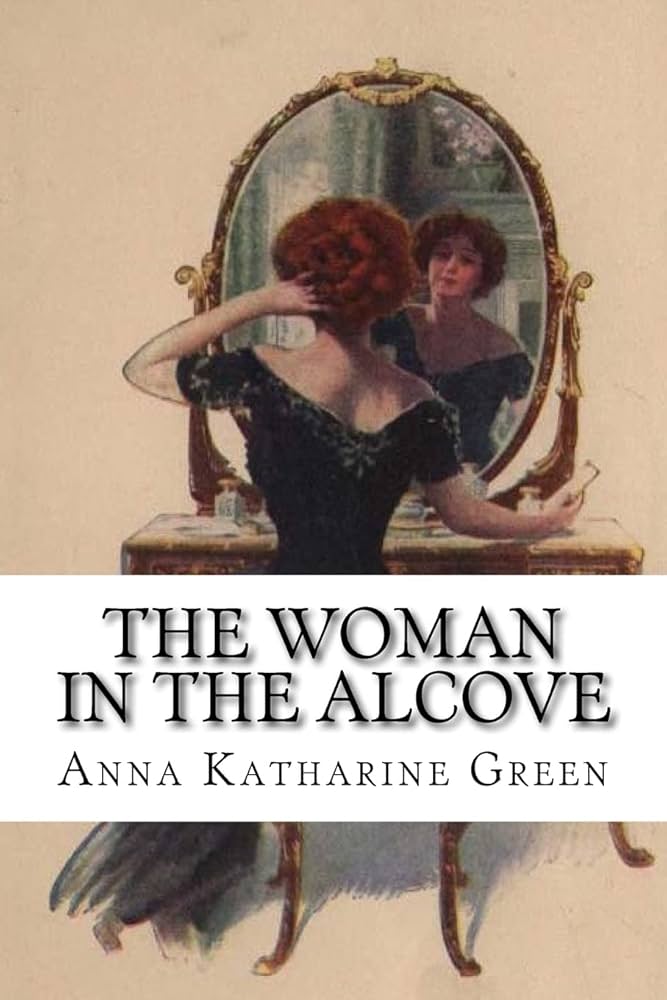Chapter V — The woman in the Alcove
byChapter V – The woman in the Alcove begins in the hushed aftermath of a night filled with tension and superstition. As the protagonist follows her uncle’s advice and exits the grand gathering, she is unable to suppress a lingering desire to observe the scene once more from afar. Her eyes are drawn to the group surrounding the famed diamond, and there she notices the fixed gaze of Mr. Grey—a man whose focus on the jewel appears too intense to be casual. When a sudden, piercing cry stops all conversation, the atmosphere tightens, and Mr. Grey’s demeanor shifts. He later dismisses the gem as a replica, a claim few accept given the diamond’s earlier scrutiny and admiration. His explanation for the cry—a family omen of death—shocks those present, especially when he links it to a fear for his daughter’s life. With that, he leaves, citing premonition rather than logic, leaving behind whispers and unease.
The protagonist, shaken by the events, attempts to piece together what she has seen and felt. Mr. Grey’s cold detachment from the diamond, paired with his eerie tale of family deaths following unexplained cries, unsettles her deeply. As dawn arrives, the newspapers flood the public with updates on the murder, including details the protagonist could not have anticipated. A mysterious note passed to the victim before her death complicates everything, adding a layer of secrecy to the crime. Mr. Durand, now heavily implicated, faces damning scrutiny, and the protagonist finds herself caught between facts and personal belief. Though evidence seems to corner him, her heart refuses to believe he could be guilty. Her conviction does not arise from denial but from a deeper understanding of his character and inconsistencies in the case that others have overlooked.
As she reflects, a sense of purpose begins to settle within her. Once a woman with little obligation beyond her social image, she now feels compelled to act, reshaped by crisis and conviction. Her love for Mr. Durand fuels a personal mission to uncover what others have missed. She decides not only to prove his innocence but to understand every detail surrounding the night’s chaos. This transformation, born from tragedy, compels her to navigate delicate social lines and confront uncomfortable truths. A key aspect of this determination includes verifying Mr. Grey’s ominous concern for his daughter’s health. To her quiet relief, the young girl is found to be well, a small yet grounding moment amid a whirlpool of suspicion and fear.
The protagonist’s commitment to uncovering the truth is not driven by fantasy or blind loyalty, but rather a belief in reason and justice. She knows that meaningful answers often lie in details dismissed as trivial. Mr. Grey’s sudden assertion about the diamond and his immediate departure signal more than superstition; they suggest foreknowledge or guilt. For a man of his standing to discredit the gem so swiftly, especially after admiring it, suggests a calculated withdrawal from attention. And yet, the room had been filled with observers—people too awestruck or confused to question what they saw. Only the protagonist, distanced enough to witness the bigger picture, begins to notice the irregularities hidden in plain sight.
Her next steps are uncertain, but her course is clear. She must trust her perceptions and use every tool at her disposal to challenge the narrative that condemns Mr. Durand. This includes understanding the roles others played that evening, particularly Mr. Grey, whose behavior increasingly seems designed to mislead. The more she recalls, the more details surface—looks exchanged, slight hesitations, and moments when the energy in the room shifted subtly. These fragments form a puzzle no one else has attempted to assemble. If truth exists in silence, then she intends to listen to what was not said, observe what was not emphasized, and follow the threads that others discarded too soon.
In a society where appearance masks intent, she must rely not just on intuition, but on clarity and persistence. Her journey has only begun, yet she already understands that the truth may not come with validation or support. It will require quiet courage—the kind that persists without recognition. With the night’s events seared into memory, she walks forward, not merely as a witness, but as a participant in the search for justice that others have neglected. Her resolve will shape what follows, even if the outcome remains uncertain.


